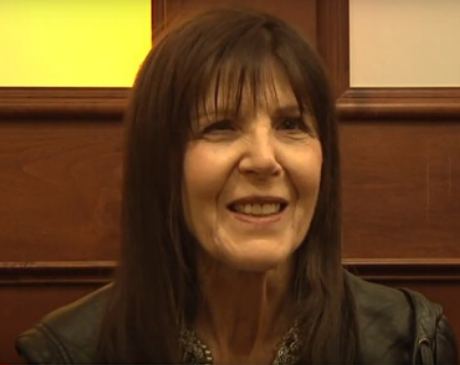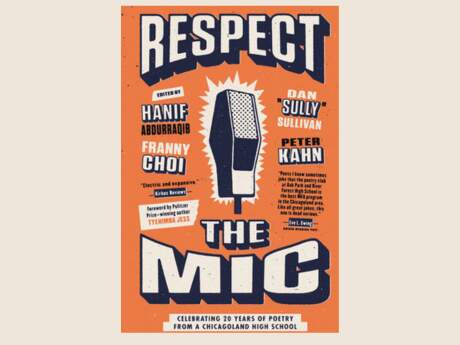On Poetry
On Complexity: Susan Mitchell

Thoughts on Complexity
The poets that interest me most, that excite me to return to them again and again, all share a single characteristic: they are remarkably attentive. They see, hear, smell, taste and feel more of the world than other poets, and they contrive to pack that moreness into their poems. Like the narrator of Beckett's Ill Seen, Ill Said, they could all say, "Moment by glutton moment. Sky earth the whole kit and boodle. Not another crumb of carrion left." As a result, their poems attend to more of the world, including disorder as well as order, contradiction as well as congruence, insanity as well as sanity, the hidden as well as the inaccessible. The attentive poem is Marianne Moore's "magic mousetrap closing on all points of the compass." Such a poem is necessarily going to be complex.
When I think of complexity in works of literature, what comes to my mind immediately are some of Chaucer's Canterbury Pilgrims, men and women who keep changing as we learn more about them, people who ultimately elude us. Chaucer, incidentally, is the first English poet on record to have used the word attention in writing. What Chaucer paid attention to were the contradictions—and the shadowy places, the opacities—in human beings. His most complex characters fascinate because there is ultimately something unknowable about them. Chaucer created characters the way some modern painters have created landscapes. There is a painting by Gustave Courbet called "The Source of the Loue" which portrays the Loue River emerging from a dark cave. What we see clearly depicted is the darkness, the mysteriousness of the source. To shine a light on that source, to illuminate it clearly would destroy something essential to its nature—its obscurity, its innerness.
After Chaucer's characters, I think of Shakespeare's A Midsummer Night's Dream with its four braided plots, its many interwoven verse forms, its play-within-the-play. To be complex is to have many parts, and since the word complex goes back to Indo-European roots that mean to twist, to braid, to weave, Shakespeare's play acts out the very meaning of complex. Even Shakespeare's thinking about comedy was complex since this play includes another play that is tragic, though presented as farce—the love story of Pyramus and Thisbe. It is as if Shakespeare, when he wrote A Midsummer Night's Dream, was thinking about how much that is essentially non-comic he could pack into a comedy; and how much that is farcical, sheer buffoonery, he could fuse with high romance.
But it is not only large literary works that are complex. Robert Frost's "Desert Places," which is only a little longer than a sonnet, packs in four different verb tenses—the past, the present, the future and a tense that wobbles between. The poem begins with snow falling and night falling:
Snow falling and night falling fast, oh, fast
In a field I looked into going past,
And the ground almost covered smooth in snow,
But a few weeds and stubble showing last.
Without a verb to anchor the participle falling, snowstorm and nightfall seem to be happening in the present, key images in a scene the narrator describes even as he witnesses it. But this turns out not to be the case. The snow and night were falling in a field the narrator looked into some time in the past. The second line situates the scene in the past, but the third line and the fourth again make the time ambiguous by using participles, covered and showing, without a verb that would fix the scene in either the past or the present. Logically speaking, the scene is past. Emotionally speaking, the scene is present, emblematic of the narrator's persistent mood of loneliness. Like the snow that covers up spatial markers, his mood obliterates distinctions between past and present loneliness. What the speaker feels is one huge stretch of desolation. In fact, his loneliness extends into the future: "And lonely as it is that loneliness/ Will be more lonely ere it will be less." Just as time in this poem turns out to be enormous, so does space as the narrator suddenly turns his attention from the emptiness of snow-covered fields to the empty spaces "between stars—on stars where no human race is." The poem's astonishing ability to contain what is obviously so much bigger, the universe, becomes a metaphor for inner space, which has the equally astonishing ability to swallow up outer space by the poem's end.
But there is even more to be said about the narrator and his emotional state. Describing the woods around the snow-covered field, the narrator remarks, "All animals are smothered in their lairs." A very different kind of speaker might have held out some relief from the desolation by imagining animals that were warm and cozy in their lairs. But interior space in this poem is either terrifyingly huge and empty or suffocating and claustrophobic. Why that is we are not told. The poem reveals and conceals. Or perhaps I should say that what it reveals allows us to see that there is still more that is concealed.
Is Frost's poem difficult? Or accessible? Readers seem to enjoy it even before its complexities are recognized and appreciated. At least, this has been my experience when I have taught the poem. But since the poem's complexities are so much a part of its meaning, what is it that the reader enjoys? And what does the reader understand of the poem if the reader has in fact missed so much of what is going on in it? In their book, Clear and Simple as the Truth, Francis-Noel Thomas and Mark Turner observe: "Classic style is modeled not merely on speech but on the core concept of conversation—conversation between equals. There is an implicit symmetry in the relationship between the writer and the reader. The model assumes that the reader could take the next turn in the conversation." It is precisely this symmetry in the relationship, a symmetry that allows the reader to feel equal to the writer, that accounts, I believe, for the love so many Americans have for Frost's poetry and for what might be called a poetry of plain speech. Frankly, I don't think that Frost is direct and clear at all. Frost is crafty, convoluted, intricate, complex. But listen to his sentence sounds—they are so colloquial, so plain, so American that the reader assumes she/he could take the next turn in this conversation. "They cannot scare me." "I have it in me." You could have said that. I could have said that. And so, Frost disarms us. But that does not mean he is accessible.
Not every poem, though, works on the conversational model that Frost's poem uses. In poems by Susan Howe, Michael Palmer, Ann Lauterbach, Leslie Scalapino, Clark Coolidge, and more recently, Jorie Graham, the conversational model operates only sporadically, if at all. In these poems something has also happened to traditional ideas of syntax, of the narrator, of coherence. Something has happened to the idea that all parts of the poem can be accounted for by a single whole, that there is only one center. But especially, something has happened to the narrator, which is why the conversational model of a Frost poem can no longer be applied. There are times when the narrator fragments. And sometimes, the narrator merges with inarticulate matter, becomes artifact so that what speaks to the reader is the poem itself.
Perhaps we are seeing so many different models for poems now, such rich diversity, because on a formal level poems are acting out the ethnic and racial diversity that characterizes America of the 21st century. Or perhaps we are seeing so many different models because we are shifting from an oral tradition to one that is textual. Or perhaps the new poems reject a phallocentric model, embracing instead one that is based on female biology which is multiple and complex. The Middle English word that Chaucer used for female genitalia was the same word he used for curiously contrived, elaborate, artful, difficult—the word queynte. A poem based on female biology is no longer fixed or congealed: it shifts between a multitude of centers, which may themselves be shifting.
Right now in America we are witnessing a paradigm shift in poetry, and while I think this is happening for all the reasons I have just mentioned, there is still another, maybe the most important reason: the poet's assertion of innerness, of mind, of psyche at a time when innerness is threatened by nearly all aspects of contemporary American lifestyle. Innerness refuses to be a sound byte on television. Innerness refuses to speak up at a huge poetry festival. Innerness demands that the reader slow down, take the time, pay attention. Innerness demands that the reader's attentiveness be equal to the attentiveness of the poet and the attentiveness of the poem.
Notes:
"Desert Places" from The Poetry of Robert Frost, edited by Edward Connery Lathem. Copyright 1936 by Robert Frost, © 1964 by Lesley Frost Ballantine, © 1969 by Henry Holt and Co. Reprinted by permission of Henry Holt and Company, LLC.
Originally published in Crossroads, Spring 2000.


